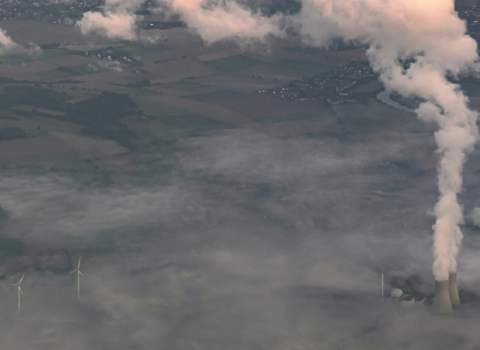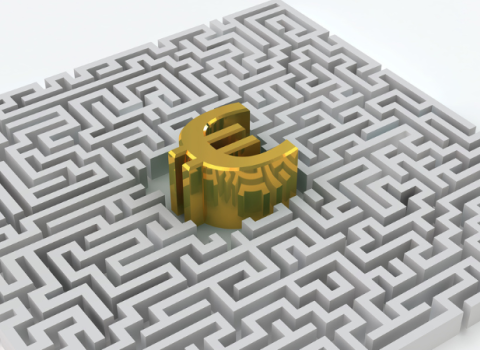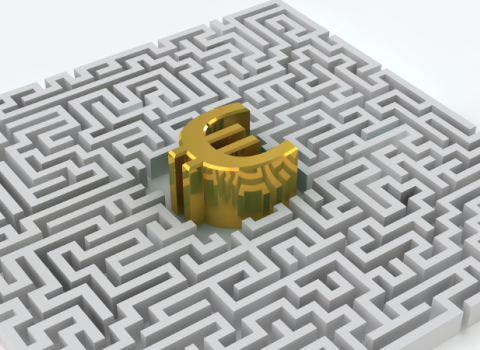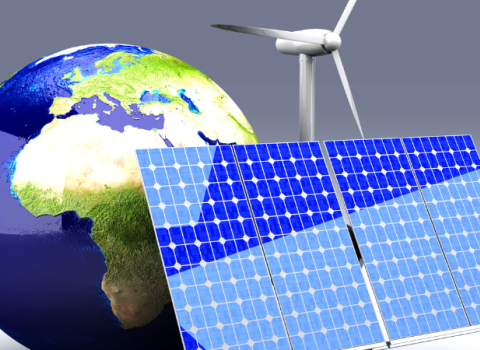Europe has many of the technologies in hand to engineer a low-carbon economy by 2050. But getting there will require a radical shakeup to its energy market.
“Europe’s strategy for a low carbon economy implies a revolution in its energy sector,” said Philip Lowe, Director General for Energy at the European Commission, speaking on 12 June at the Science|Business conference in Brussels on ‘Inventing Europe’s Energy Future’, supported by GE. “There are certain elements of the strategy where there’s no going back,” he warned.
European leaders have pledged to slash CO2 emissions 80 to 95 per cent by 2050 – a target embodied in the European Commission’s Energy Roadmap.
By that date, they have agreed renewable energies such as wind and solar will provide 55 per cent of Europe’s gross energy. “I think the bet on renewables has proved to be correct until now. Costs are coming down significantly. But investors don’t like it very much because the subsidies must come down as well,” said Lowe.
Energy information
To drive market innovation and energy efficiency, Lowe called for a dramatic new approach to communicating energy information between consumers and suppliers: “If I had to choose one thing which is really important for a breakthrough in energy innovation, it must be centred around the issue of information,” he said.
Smart grids and smart meters can enable energy companies to supply consumers and businesses with a steady flow of information so they can plan ahead and maximise energy efficiency. “Energy companies should be asking consumers how and when they would like their energy delivered and at what voltage,” Lowe argued. “We need a change in perception. We need a breakthrough in the way in which we are using energy and how we are supplying it. That implies suppliers developing different business models.”
Additional investment in research and innovation can help speed Europe’s towards its 2050 energy goals. But Lowe argued that much of the shift to a low-carbon economy can be accomplished by wielding existing technologies to drive market innovation. “In order to produce this flexibility – this smarter more intelligent approach – I don’t think we need technological innovation in the pure sense of the word. I think it is application of technology which already exists - whether software, whether systems engineering work – in a way that optimises technology applications on the ground.”
Wiring smart cities
Lowe pointed to task of rewiring cities to be “smart cities” as a key innovation challenge. “That’s the kind of innovation which I see dominating our work. It’s the capacity to use already discovered technology in a creative way to meet challenge of grid stability, flexibility of integration of different needs and bringing down costs.”
Horst-Tore Land, director of Ecomagination EMEA, General Electric, concurred Europe’s biggest challenge is accelerating commercial innovation. “It’s not only about who has the best technology – it’s about how to commercialise efficiently, fast and in capital-efficient manner,” Land said.
GE took a new approach to doing just that two years ago by launching its Ecomagination Challenge initiative, which has invested $200 million in innovative energy start-ups around the world. “All these great companies have outstanding technology – driving down the cost of the system, the lowest cost communications technologies for smart grids, the lowest cost sensing technology,” Land said. “But they all need a platform to scale globally and make innovation meaningful. We are not only investing in companies, we are creating commercial partnerships that allow those companies to scale their offering globally.”
Subsidising renewables
The objective of Europe’s Energy Roadmap is to confront member states with their current policies and their common objectives – and to figure out the best way forward. It highlights scenarios which “comfortably” enable the European Union to achieve a low-carbon economy by 2050, Lowe said. It starts with the “no-regret, no-going-back scenarios for everyone.”
The choices are not surprising. A low-carbon economy, requires greater dependence on electricity. To keep electricity low carbon requires a high proportion of renewables in the EU’s energy mix. “If there is one serious assumption [in the roadmap],” Lowe said, “it’s let’s take the bet and subsidise renewable technologies now, on the assumption the cost will come down in 10 years and they will be viable and at grid parity without subsidies.”
The challenge in developing low-carbon technologies is that they have a very high capital cost and marginal operational costs, he said. “That’s a quite a difficult problem hard thing for economists to work out. What is the right framework for incentivising investment? Governments are struggling with that. How much do you subsidize renewables? At what point start reducing costs?”
A high reliance on renewables in Europe’s future energy mix will create intermittent flows of energy, which in turn require smarter smarter networks to cope with the flexible supply management and flexible demand management. A key technology challenge will be managing that flexible flow and integrating conventional and renewable power plants. “There are a lot of questions where we need to find solutions,” said Reinhold O. Elsen, vice president and head of R&D at German utility RWE Power. Ramping a power plant up and down on a daily basis to accommodate changing flows, for example, creates stress and reduces the lifetime of the plant.
Ultimately, Lowe argued, it will be easier and less expensive to balance out the ebbs and flows of energy in a larger system with greater economies of scale.
Lowe also pointed to energy efficiency as a top policy priority “even if we struggling now to persuade governments to take binding measures to use energy better. Energy efficiency is probably the most effective cost of energy mix. If we can get there. In fact the 20% for 2020 objective is probably only halfway to what we need to achieve if want to achieve the 2050 objective.”
Bruegel Research Fellow Georg Zachmann questioned some of the underlying assumptions of Europe’s Energy Roadmap. For the third generation of nuclear power plants, for example, he said it assumes a reduction in costs of 17 per cent. But for second-generation plants, the cost of installation rose by 500 per cent between 1970 and 1995. “So we cannot be sure that the assumptions made in the energy roadmap will come true, even if they are based on the best information we have today.”
Zachmann also flagged the need to make the transition system resilient to it can accommodates shocks from specific technologies which do not deliver. “It’s a very big task.”
The Innovating Europe’s Energy Future conference and live webcast was supported by GE. A recorded version of the broadcast will be available on the event website.





 A unique international forum for public research organisations and companies to connect their external engagement with strategic interests around their R&D system.
A unique international forum for public research organisations and companies to connect their external engagement with strategic interests around their R&D system.